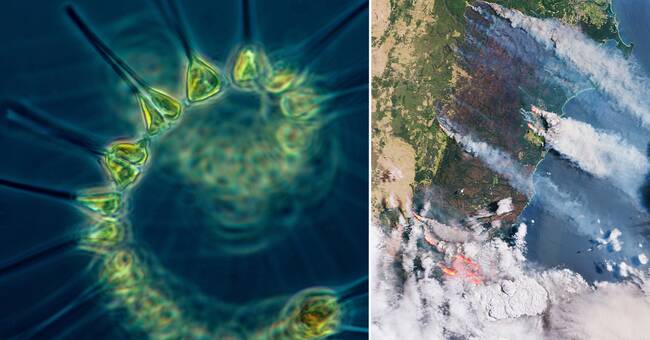At the turn of the year 2019–2020, the sea off the coast of Australia suddenly began to bloom.
Satellite images showed increased production of chlorophyll, which indicates increased growth of plant algae, also called phytoplankton.
In a recently published study in Nature, researchers observe the connection between forest fires and an increased algal bloom in the South Pacific during the same period.
The forest fire fertilized the sea with iron
The forest fire emitted carbon dioxide and iron, among other things.
When ash and soot from the fires were carried by the wind out over the sea, iron fell into the blue and accelerated the algal bloom.
- An addition of iron was needed for the algae bloom to take off, says Erik Selander.
The sea off Australia is poor in iron - a nutrient needed for phytoplankton to grow.
The study shows that the algal bloom occurred at the same time as the fires, but it is not yet possible to show whether the fires really gave rise to the algal bloom.
- It is likely that the increased growth of algae is largely due to the material from the fires, says Erik Selander.
Captured carbon dioxide
In addition, the algae captured carbon dioxide from the forest fires.
- The algae captured about as much carbon as the fires emitted.
But it is difficult to know how much of the coal remained in the sea, says Erik Selander.
Play the video to see how green chlorophyll shows growth on plant algae in the Pacific Ocean.
Do not miss anything about the climate!
Receive SVT's newsletter in your inbox every week.
Subscribe to the climate letter |
SVT News - SVT News
Get the most important news, analyzes and reports on the climate crisis directly in your inbox.

